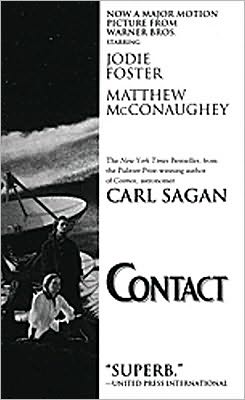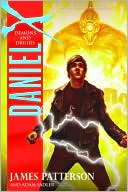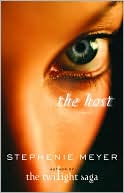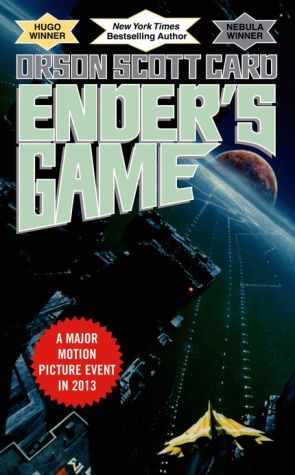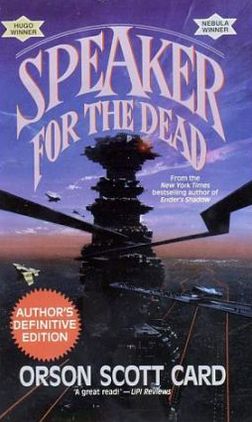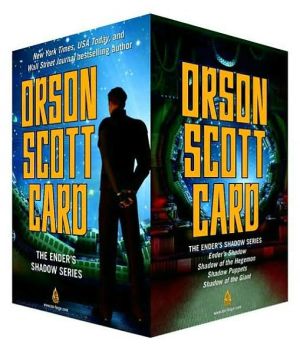Contact
In December, 1999, a multinational team journeys out to the stars, to the most awesome encounter in human history. Who — or what — is out there?\ In Cosmos, Carl Sagan explained the universe. In Contact, he predicts its future — and our own.
Search in google:
In December, 1999, a multinational team journeys out to the stars, to the most awesome encounter in human history. Who — or what — is out there?In Cosmos, Carl Sagan explained the universe. In Contact, he predicts its future — and our own.Publishers WeeklyWho could be better qualified than the author of the highly successful Cosmos to turn the possibility of extraterrestrial intelligence, and humankind's first contact with it, into imaginative reality? This is precisely what Sagan does in this eagerly awaited and, as it turns out, engrossing first novel. The basic plot is very simple. A worldwide system of radio telescopes, in the charge of brilliant astrophysicist Ellie Arroway, picks up a ``Message'' from outer space. Ellie is instrumental in decoding the message and building the ``Machine'' for which it gives instructions (despite stiff opposition from religious fundamentalists and those scientists and politicians who fear it may be a Trojan Horse). Then she and fellow members of a small multinational team board the machine, take a startling trip into outer spaceand on their return must convince the scientific community that they are not the perpetrators of a hoax. Sagan's characters, mostly scientists, are credible without being memorable, and he supplies a love interest that is less than compelling. However, his informed and dramatically enacted speculations into the mysteries of the universe, taken to the point where science and religion touch, make his story an exciting intellectual adventure and science fiction of a high order. First serial to Discover Magazine; BOMC selection. Foreign rights: S & S. October 1
\ Surrounding the blue-white star in its equatorial plane was a vast ring of orbiting debris rocks and ice, metals and organics reddish at the periphery and bluish closer to the star. The world-sized polyhedron plummeted through a gap in the rings and emerged out the other side. In the ring plane, it had been intermittently shadowed by icy boulders and tumbling mountains. But now, carried along its trajectory toward a point above the opposite pole of the star, the sunlight gleamed off its millions of bowl-shaped appendages. If you looked very carefully you might have seen one of them make a slight pointing adjustment. You would not have seen the burst of radio waves washing out from it into the depths of space.\ \ For all the tenure of humans on Earth, the night sky had been a companion and an inspiration. The stars were comforting. They seemed to demonstrate that the heavens were created for the benefit and instruction of humans. This pathetic conceit became the conventional wisdom worldwide. No culture was free of it. Some people found in the skies an aperture to the religious sensibility. Many were awestruck and humbled by the glory and scale of the cosmos. Others were stimulated to the most extravagant flights of fancy.\ At the very moment that humans discovered the scale of the universe and found that their most unconstrained fancia were in fact dwarfed by the true dimensions of even the Milky Way Galaxy, they took steps that ensured that their descendants would be unable to see the stars at all. For a million years humans had grown up with a personal daily knowledge of the vault of heaven. In the last few thousand years they began building and emigrating to the cities. In the last few decades, a major fraction of the human population had abandoned a rustic way of life. As technology developed and the cities were polluted, the nights became starless. New generations grew to maturity wholly ignorant of the sky that had transfixed their ancestors and that had stimulated the modern age of science and technology. Without even noticing, just as astronomy entered a golden age most people cut themselves off from the sky, a cosmic isolationism that ended only with the dawn of space exploration.\ Ellie would look up at Venus and imagine it was a world something like the Earth populated by plants and animals and civilizations, but each of them different from the kinds we have here. On the outskirts of town, just after sunset, she would examine the night sky and scrutinize that unflickering bright point of light. By comparison with nearby clouds, just above her, still illuminated by the Sun, it seemed a little yellow. She tried to imagine what was going on there. She would stand on tiptoe and stare the planet down. Sometimes, she could almost convince herself that she could really see it; a swirl of yellow fog would suddenly clear, and a vast jeweled city would briefly be revealed. Air cars sped among the crystal spires. Sometimes she would imagine peering into one of those vehicles and glimpsing one of them. Or she would imagine a young one, glancing up at a bright blue point of light in its sky, standing on tiptoe and wondering about the inhabitants of Earth. It was an irresistible notion: a sultry, tropical planet brimming over with intelligent life, and just next door.\ She consented to rote memorization, but knew that it was at best the hollow shell of an education. She did the minimum work necessary to do well in her courses, and pursued other matters. She arranged to spend free periods and occasional hours after school in what was called "shop" — a dingy and cramped small factory established when the school devoted more effort to "vocational education", than was now fashionable. "Vocational education" meant, more than anything else, working with your hands. There were lathes, drill presses, and other machine tools which she was forbidden to approach, because no matter how capable she might be, she was still "a girl". Reluctantly they granted her permission to pursue her own projects in the electronics area of the "shop." She built radios more or less from scratch, and then went on to something more interesting.\ She built an encrypting machine. It was rudimentary, but it worked. It could take any English-language message and transform it by a simple substitution cipher into something that looked like gibberish. Building a machine that would do the reverse — converting an encrypted message into clear when you didn't know the substitution convention — that was much harder. You could have the machine run through all the possible substitutions (A stands for B, A stands for C, A stands for D...), or you could remember that some letters in English were used more often than others. You could get some idea of the frequency of letters by looking at the sizes of the bins for each letter of type in the print shop next door. "ETAOIN SHRDLU," the boys in print shop would say, giving pretty closely the order of the twelve most frequently used letters in English. In decoding a long message, the letter that was most common probably stood for an E. Certain consonants tended to go together, she discovered; vowels distributed themselves more or less at random. The most common three-letter word in the language was "the." If within a word there was a letter standing between a T and an E, it was almost certainly H. If not, you could bet on R or a vowel. She deduced other rules and spent long hours counting up the frequency of letters in various schoolbooks before she discovered that such frequency tables had already been compiled and published. Her decrypting machine was only for her own enjoyment. She did not use it to convey secret messages to friends. She was unsure to whom she might safely confide these electronic and cryptographic interests; the boys became jittery or boisterous, and the girls looked at her strangely.\ Soldiers of the United States were fighting in a distant place called Vietnam. Every month, it seemed, more young men were being scooped off the street or the farm and packed off to Vietnam. The more she learned about the origins of the war, and the more she listened to the public pronouncements of national leaders, the more outraged she became. The President and the Congress were lying and killing, she thought to herself, and almost everyone else was mutely assenting. The fact that her stepfather embraced official positions on treaty obligations, dominoes, and naked Communist aggression only strengthened her resolve. She began attending meetings and rallies at the college nearby. The people she met there seemed much brighter, friendlier, more alive than her awkward and lusterless high school companions. John Staughton first cautioned her and then forbade her to spend time with college students. They would not respect her, he said. They would take advantage of her. She was pretending to a sophistication she did not have and never would. Her style of dress was deteriorating. Military fatigues were inappropriate for a girl and a travesty, a hypocrisy, for someone who claimed to oppose the American intervention in Southeast Asia.\ Beyond pious exhortations to Ellie and Staughton not to "fight," her mother participated little in these discussions. Privately she would plead with Ellie to obey her stepfather, to be "nice." Ellie now suspected Staughton of marrying her mother for her father's life insurance — why else? He certainly showed no signs of loving her — and he was not predisposed to be "nice." One day, in some agitation, her mother asked her to do something for all their sakes: attend Bible class. While her father, a skeptic on revealed religions, had been alive, there was no talk of Bible class. How could her mother have married Staughton? The question welled up in her for the thousandth time. Bible class, her mother continued, would help instill the conventional virtues; but even more important, it would show Staughton that Ellie was willing to make some accommodation. Out of love and pity for her mother, she acquiesced.\ So every Sunday for most of one school year Ellie went to a regular discussion group at a nearby church. It was one of the respectable Protestant denominations, untainted by disorderly evangelism. There were a few high school students, a number of adults, mainly middle-aged women, and the instructor, the minister's wife. Ellie had never seriously read the Bible before and had been inclined to accept her father's perhaps ungenerous judgment that it was "half barbarian history, half fairy tales." So over the weekend preceding her first class, she read through what seemed to be the important parts of the Old Testament, trying to keep an open mind. She at once recognized that there were two different and mutually contradictory stories of Creation in the first two chapters of Genesis. She did not see how there could be light and days before the Sun was made, and had trouble figuring out exactly who it was that Cain had married. In the stories of Lot and his daughters, of Abraham and Sarah in Egypt, of the betrothal of Dinah, of Jacob and Esau she found herself amazed. She understood that cowardice might occur in the real world — that sons might deceive and defraud an aged father, that a man might give craven consent to the seduction of his wife by the King, or even encourage the rape of his daughters. But in this holy book there was not a word of protest against such outrages. Instead, it seemed, the crimes were approved, even praised.\ When class began, she was eager for a discussion of these vexing inconsistencies for an unburdening illumination of God's Purpose, or at least for an explanation of why these crimes were not condemned by the author or Author. But in this she was to be disappointed. The minister's wife blandly temporized. Somehow these stories never surfaced in subsequent discussion. When Willie inquired how it was possible for the maid servants of the daughter of Pharaoh to tell just by looking that the baby in the bullrushes was Hebrew, the teacher blushed deeply and asked Ellie not to raise unseemly questions. (The answer dawned on Ellie at that moment.)\ When they came to the New Testament, Ellie's agitation increased Matthew and Luke traced the ancestral line of Jesus back to King David. But for Matthew there were twenty-eight generations between David and Jesus; for Luke forty-three. There were almost no names common to the two lists. How could both Matthew and Luke be the Word of God? The contradictory genealogies seemed to Ellie a transparent attempt to fit the isaianic prophecy after the event — cooking the data, it was called in chemistry lab. She was deeply moved by the Sermon on the Mount, deeply disappointed by the admonition to render unto Caesar what is Caesar's, and reduced to shouts and tears after the instructor twice sidestepped her questions on the meaning of "I bring not peace but the sword." She told her despairing mother that she had done her best, but wild horses wouldn't drag her to another Bible class.\ She was lying on her bed. It was a hot summer's night. Elvis was singing, "One night with you, that's what I'm beggin' for." The boys at the high school seemed painfully immature, and it was difficult especially with her stepfather's strictures and curfews — to establish much of a relationship with the young college men she met at lectures and rallies. John Staughton was right, she reluctantly admitted to herself, at least about this: The young men, almost without exception, had a penchant for sexual exploitation. At the same time, they seemed much more emotionally vulnerable than she had expected. Perhaps the one caused the other.\ She had half expected not to attend college, although she was determined to leave home. Staughton would not pay for her to go elsewhere, and her mother's meek intercessions were unavailing. But Ellie had done spectacularly well on the standardized college entrance examinations and found to her surprise her teachers telling her that she was likely to be offered scholarships by well-known universities. She had guessed on a number of multiple-choice questions and considered her performance a fluke. If you know very little, only enough to exclude all but the two most likely answers, and if you then guess at ten straight questions, there is about one chance in a thousand, she explained to herself, that you'll get all ten correct. For twenty straight questions,the odds were one in a million. But something like a million kids probably took this test. Some had to get lucky.\ Cambridge, Massachusetts, seemed far enough away to elude John Staughton's influence, but close enough to return from on vacation to visit her mother — who viewed the arrangement as a difficult compromise between abandoning her daughter and incrementally irritating her husband. Ellie surprised herself by choosing Harvard over the Massachusetts Institute of Technology.\ She arrived for orientation period, a pretty dark-haired young woman of middling height with a lopsided smile and an eagerness to learn everything. She set out to broaden her education, to take as many courses as possible apart from her central interests in mathematics, physics, and engineering. But there was a problem with her central interests. She found it difficult to discuss physics, much less debate it, with her predominantly male classmates. At first they paid a kind of selective inattention to her remarks. There would be a slight pause, and then they would go on as if she had not spoken. Occasionally they would acknowledge her remark, even praise it, and then again continue undeflected. She was reasonably sure her remarks were not entirely foolish, and did not wish to be ignored, much less ignored and patronized alternately. Part of it — but only a part — she knew was due to the softness of her voice. So she developed a physics voice, a professional voice: clear, competent, and many decibels above conversational. With such a voice it was important to be right. She had to pick her moments. It was hard to continue long in such a voice, because she was sometimes in danger of bursting out laughing. So she found herself leaning toward quick, sometimes cutting, interventions, usually enough to capture their attention; then she could go on for a while in a more usual tone of voice. Every time she found herself in a new group she would have to fight her way through again, just to dip her oar into the discussion. The boys were uniformly unaware even that there was a problem.\ Sometimes she would be engaged in a laboratory exercise or a seminar when the instructor would say, "Gentlemen, let's proceed," and sensing Ellie's frown would add, "Sorry, Miss Arroway, but I think of you as one of the boys." The highest compliment they were capable of paying was that in their minds she was not overtly female.\ She had to fight against developing too combative a personality or becoming altogether a misanthrope. She suddenly caught herself. "Misanthrope" is someone who dislikes everybody, not just men. And they certainly had a word for someone who hates women: "misogynist." But the male lexicographers had somehow neglected to coin a word for the dislike of men. They were almost entirely men themselves, she thought, and had been unable to imagine a market for such a word.\ More than many others, she had been encumbered with parental prescriptions. Her newfound freedoms — intellectual, social, sexual — were exhilarating. At a time when many of her contemporaries were moving toward shapeless clothing that minimized the distinctions between the sexes, she aspired to an elegance and simplicity in dress and makeup that strained her limited budget. There were more effective ways to make political statements, she thought. She cultivated a few close friends and made a number of casual enemies, who disliked her for her dress, for her political and religious views, or for the vigor with which she defended her opinions. Her competence and delight in science were taken as rebukes by many otherwise capable young women. But a few looked on her as what mathematicians call an existence theorem — a demonstration that a woman could, sure enough, excel in science — or even as a role model.\ At the height of the sexual revolution, she experimented with gradually increasing enthusiasm, but found she was intimidating her would-be lovers. Her relationships tended to last a few months or less. The alternative seemed to be to disguise her interests and stifle her opinions, something she had resolutely refused to do in high school. The image of her mother, condemned to a resigned and placatory imprisonment, haunted Ellie. She began wondering about men unconnected with the academic and scientific life.\ Some women, it seemed, were entirely without guile and bestowed their affections with hardly a moment's conscious thought. Others set out to implement a campaign of military thoroughness, with branched contingency trees and fat/back positions, all to "catch" a desirable man. The word "desirable" was the giveaway, she thought. The poor jerk wasn't actually desired, only "desirable" — a plausible object of desire in the opinion of those others on whose account this whole sorry charade was performed. Most women, she thought, were somewhere in the middle, seeking to reconcile their passions with their perceived long-term advantage. Perhaps there were occasional communications between love and self-interest that escaped the notice of the conscious mind. But the whole idea of calculated entrapment made her shiver. In this matter, she decided, she was a devotee of the spontaneous. That was when she met Jesse.\ Copyright© 1985 by Carl Sagan
\ Publishers Weekly - Publisher's Weekly\ Who could be better qualified than the author of the highly successful Cosmos to turn the possibility of extraterrestrial intelligence, and humankind's first contact with it, into imaginative reality? This is precisely what Sagan does in this eagerly awaited and, as it turns out, engrossing first novel. The basic plot is very simple. A worldwide system of radio telescopes, in the charge of brilliant astrophysicist Ellie Arroway, picks up a ``Message'' from outer space. Ellie is instrumental in decoding the message and building the ``Machine'' for which it gives instructions (despite stiff opposition from religious fundamentalists and those scientists and politicians who fear it may be a Trojan Horse). Then she and fellow members of a small multinational team board the machine, take a startling trip into outer spaceand on their return must convince the scientific community that they are not the perpetrators of a hoax. Sagan's characters, mostly scientists, are credible without being memorable, and he supplies a love interest that is less than compelling. However, his informed and dramatically enacted speculations into the mysteries of the universe, taken to the point where science and religion touch, make his story an exciting intellectual adventure and science fiction of a high order. First serial to Discover Magazine; BOMC selection. Foreign rights: S & S. October 1\ \ \ \ \ Library Journal``There's wonder and awe enough in the real world,'' is the credo of Ellie Arroway, a renowned radio astronomer. Since she's also a guiding light in the search for extraterrestrial intelligence, that world expands into the realm of Sagan's scientific speculations. Ellie discovers a mathematically encoded message that proves to hold blueprints for a machine to convey us to Vega, its origin. How Sagan develops this scientific event, and its political/religious effectsas we learn our true place among the starsis the engrossing fun here. His novelistic attempt to express Ellie's philosophy, however, is too artless. Sagan intends a scientific mysticism that weds the cosmic and personal (Ellie's strained family relations), but can only manage to sound like pi in the sky in your own backyard. Still, the ideas are stimulating, and Contact makes for entertaining reading. BOMC main selection. Jeff Clark, SUNY Coll. at Old Westbury, Lib.\ \ \ Library JournalDr. Ellie Arroway, a radio astronomer, discovers a clear and unmistakably intelligent signal from outer space. This signal, and the significance of knowing "we are not alone," excites debate; fosters love, hate, and fear; and unifies mankind on a worldwide scale. Ellie remains scientifically skeptical and aloof from the controversy as she becomes involved with the politicians and scientists who hammer out a consolidated earthly response to the extraterrestrials' instructions for building a mysterious "machine." Is the machine good or evil? Is it from God? Or is it a doomsday machine? Narrator Laurel Lefkow has a lovely, mellow voice that will lull listeners, providing the multinational characters with precise accents. Overdubs mar the narrative in spots but not enough to counteract Sagan's beautiful writing; he contemplates faith-based vs. scientifically grounded belief systems of the universe's creation and purpose, showing remarkable understanding of both positions and in the end synthesizes the two. Recommended for larger collections. Douglas C. Lord, Hartford P.L., CT Copyright 2001 Cahners Business Information.\ \
